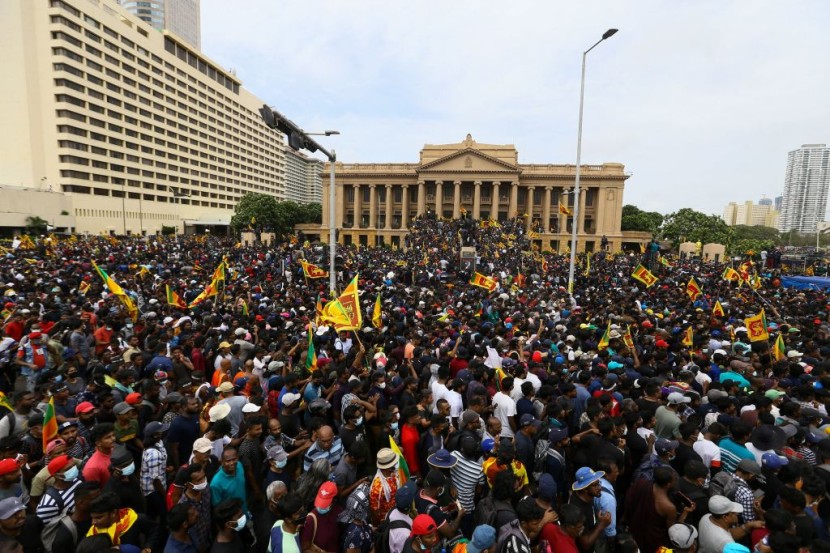
The president and prime minister of Sri Lanka announced their resignation on Saturday after the chaos prompted by angry protests against government leadership as the country suffered severe economic convulsions for months.
Prime Minister Ranil Wickremesinghe said he would step down from his post once a new administration gets in charge. Then, President Gotabaya Rajapaksa announced that he would resign on July 13, according to a government official hours later, as reported by AP News.
Sri Lanka has been suffering from severe shortages of essentials brought on by the economic collapse, which made it difficult for individuals to purchase food, fuel, and other necessities. Such a situation mounted pressure on both officials to leave their positions.
Authorities Fail To Stop Raging Protesters
Police had imposed a curfew to prevent the planned protests, but after it was criticized as illegal by law experts and opposition legislators, they lifted it.
Protestors taking a dip in the pool at President’s House. pic.twitter.com/7iUUlOcP6Z
— DailyMirror (@Dailymirror_SL) July 9, 2022
Thousands of demonstrators stormed Rajapaksa's guarded home in Colombo, the country's capital.
According to Wickremesinghe's office, protesters later broke into the prime minister's home and set it ablaze. There were no initial reports of fire-related injuries.
Earlier in the day, a government source told Reuters that Wickremesinghe had relocated to a secured area.
Government spokesperson Mohan Samaranayake said he has no information on the whereabouts of President Gotabaya Rajapaksa.
Earlier, police and military used tear gas to disperse demonstrators who had assembled in the streets to march on the presidential mansion while carrying signs, drumming, and waving flags. But they failed to hold back the protesters from advancing.
In total, the chaos on Saturday injured more than 39 individuals.
Crisis Won't End Soon
Thyagi Ruwanpathirana, a researcher at Amnesty International, believes that Sri Lanka would have to endure the crisis "for some time."
She said: "There is a lot of wait and watch and that is affecting the people. We have not had fuel for days ... Just imagine running out of fuel. People cant get to work. Kids can't get to school. The whole economy is at a standstill," she told Al Jazeera.
As per the news organization's correspondent in Colombo, the "tens of thousands" of demonstrators have stormed train stations and "forced" laborers to join the protests in the country's capital. They underscored that "they are taking their country back" and insisted that Gotabaya Rajapaksa should leave the presidency.
Since March, mostly peaceful demonstrations have called for his resignation.
As a result of Sri Lanka's worst financial turmoil in recent history, millions of people are unable to afford necessities, including food, medicine, and fuel.
In recent months, thousands of people have protested in the streets, urging the nation's leaders to step down amid claims of mismanagement of the economy.
In major cities, large crowds had to wait in line for hours to get fuel, occasionally feuding with law enforcement and the military in the process.
According to Wickremesinghe, as per a CNN report, the government has started discussions with the IMF to restore its economy.
He told parliament on Tuesday negotiating with the IMF was problematic because they initiated the talks as a "bankrupt" nation rather than a developing one.
Related Article: IBT Media Fires Back: IBT 'rightful and legal' Newsweek Owner, States Lawyer; Dev Pragad as Supposed Owner a 'fiction,' 'facade'
© 2025 HNGN, All rights reserved. Do not reproduce without permission.








